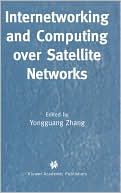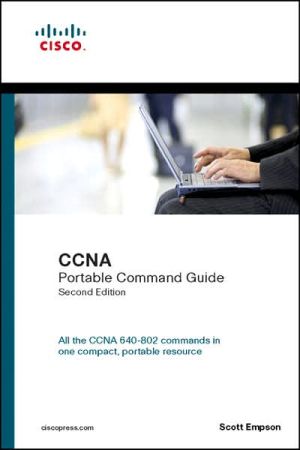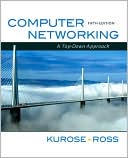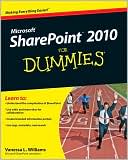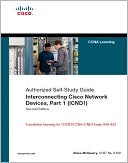Internetworking and Computing Over Satellite Networks
Search in google:
In this reference for students, engineers, and researchers in satellite-related data communication networks, computer networks, and distributed systems, Zhang (computer sciences, University of Texas- Austin) presents ten chapters written by active researchers surveying recent work and reporting on results in technical problems. The order of the chapters follows the ISO network layer model, from the role of satellite networks in the information age through applications in data broadcast and information dissemination. Annotation ©2003 Book News, Inc., Portland, OR
List of FiguresxiList of TablesxvPrefacexviiContributing Authorsxxi1The Role of Satellite Networks in the 21st Century11Introduction12Internet over Satellite Architecture32.1The Roles of Satellite Network in the Internet42.2The Role of Satellite in the Satellite Network53Common Applications74Visions for the Future94.1Commercial Market94.2The DARPA NGI Vision105Challenges112Satellite Constellation Networks131Introduction132Benefits of Going to LEO153Describing the Systems174Geometry, Topology and Delay195Delay236Handover267Networking Design288Simulators319Summary323Medium Access Control Protocols for Satellite Communications351Introduction352Polling Based Access Protocols413Fixed Assignment Multiple Access (FAMA) Protocols413.1Frequency Division Multiple Access (FDMA)423.2Time Division Multiple Access (TDMA)433.3Code Division Multiple Access (CDMA)454Random Access Protocols464.1Asynchronous Random Access Protocols474.1.1Aloha474.1.2Selective-Reject Aloha (SREJ-Aloha)494.2Synchronous Random Access Protocols504.3Carrier Sense Multiple Access (CSMA)525Demand Assignment Multiple Access (DAMA) Protocols525.1Demand Assignment Based on FDMA565.2Making Reservations by Contention Based Access575.2.1Reservation Aloha (R-Aloha)575.2.2Priority-Oriented Demand Assignment (PODA)585.2.3Split-Channel Reservation Multiple Access (SRMA)625.2.4The Time-of-Arrival Collision Resolution Algorithm (CRA)635.2.5Packet-Demand Assignment Multiple Access (PDAMA)676Hybrid Protocols696.1Round-Robin Reservations (RRR)696.2Interleaved Frame Flush-Out (IFFO)716.3Split-Channel Reservation Upon Collision (SRUC)746.4Announced Retransmission Random Access (ARRA)756.5Scheduled-Retransmission Multiple Access (SRMA)776.6Response Initiated Multiple Access (RIMA)816.7Combined Free/Demand Assignment Multiple Access836.8Fixed Boundary Integrated Access Scheme (FBIA)856.9Combined Random/Reservation Multiple Access (CRRMA)877Conclusions and Summary904Direct Broadcast Satellites and Asymmetric Routing951Introduction952Problems with Dynamic Asymmetric Routing962.1Unicast962.2Multicast983Tunneling: A Practical Solution984Demonstration of Tunneling Approach1005RFC 3077: The IETF Standard1035.1Topology and Requirements1045.2Tunneling Mechanism Details1055.3Dynamic Tunnel Configuration1075.4Tunneling Protocol1095.5Current Status1106Limitations and Long-Term Solutions1115Using Satellite Links in the Delivery of Terrestrial Multicast Traffic1151Introduction1152Overview of Multicast Deployment1173Satellite Delivery of Multicast1184Integrating Satellite and Terrestrial Networks1185Using Satellite Paths for Multicast Sessions1205.1Motivation and Metrics1205.2Methodology1225.3Results1226When to Use Satellites?1286TCP Performance over Satellite Channels1311Introduction1312Transmission Control Protocol (TCP) Overview1322.1Basic TCP Operation1322.2Connection Establishment and Release1322.3Basic Loss Recovery and Congestion Avoidance1342.4Enhanced Loss Recovery and Congestion Avoidance1353TCP Performance Problems over Satellite Links1364Enhancing TCP Performance using Standard Mechanisms1384.1Window scale1384.2Path MTU discovery1394.3Error correction1394.4Further loss recovery enhancements1405Research Issues1425.1Connection startup1435.2Shared TCP state and TCP pacing1465.3Link asymmetry1475.4Experimental loss recovery techniques1485.5Implementation details1495.6TCP fairness1495.7Using multiple data connections1515.8Header compression1525.9TCP Performance Enhancement Proxy1525.10Additional protocols1536Summary1547TCP Performance Enhancement Proxy1591Introduction1592The Motivation1612.1The Slow-Start Problem1612.2The Window Size Problem1623The Practical Solution1633.1Basic Architecture1643.2Example: Deployment in HNS DirecPC1663.3Alternative Architecture and Mechanisms1684The Big Argument1704.1The End-to-end Reliability Issue1704.2The Fate Sharing Issue1715The "Show Stopper"?1725.1Conflicts between IPsec and TCPPEP1725.2The End-to-end Security Issue1745.3Researches on Resolving the Conflicts with IPsec1766Conclusion1778Performance Evaluation of TCP splitting over Satellite1811Introduction1812Model-based Analysis1852.1Network Model1852.2Lossless Links1862.2.1Delay Models1872.3Links with Random Losses1902.3.1The Server-Proxy Link is lossless1902.3.2Random Losses on Both Links1923Discussion1933.1Initial Window Size1933.2Slow or Congested Proxy1953.3File Size1973.4Connection With Asymmetric Segments1974The Experiment System1995Measurement-based Analysis2015.1Effect of File Size and Caching2015.2Effect of congestion and packet losses2055.3Effect of embedded objects and persistent connection2116Implications on System Design2157Conclusion2169Scheduling Data Broadcast2211Introduction2212The Basic Model2232.1Persistent User Model2232.2Impatient User Model2243Theoretical Results2244On-line Scheduling Algorithm2255Performance Evaluation2265.1Validation of algorithm2275.2Persistent user case2285.3Impatient user case2296Conclusions230AppendixDeriving the Mean Access Time and the Variance of Access Time231AppendixMinimizing the Variance of Access Time233AppendixDeriving the Service Ratio234AppendixMaximizing the service ratio235AppendixDeriving The Mean Tuning Time23610Information Dissemination Applications2391Introduction2402IIDS architecture2423Mobile User Profiling2434Dynamic User Profile Clustering and Aggregation2464.1Incremental Clustering Framework2474.2Adaptive Re-clustering2494.3Evaluation2505Data Dissemination techniques2545.1Predictive Dissemination and Caching2545.2Bandwidth-Aware Filtering2555.3Reliable Multicast-based Dissemination2566Implementation and Demonstration2577Conclusions257Index261
